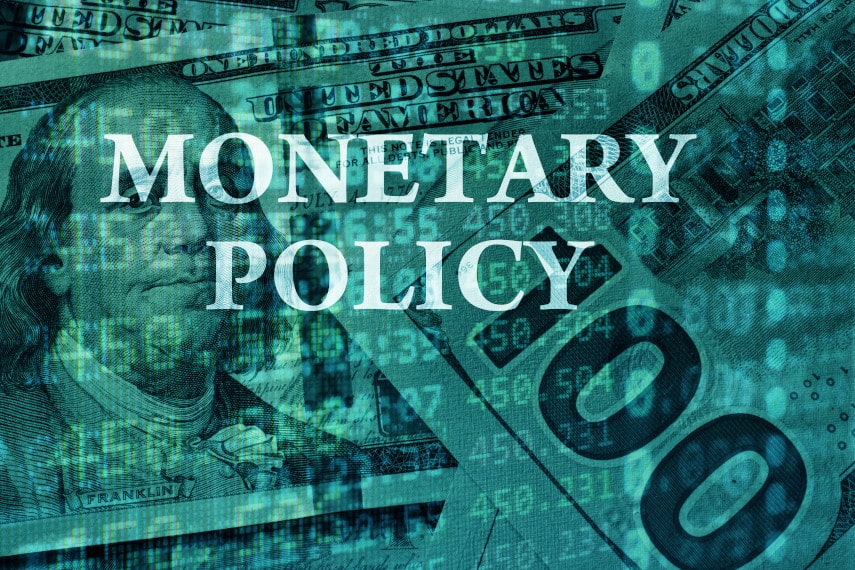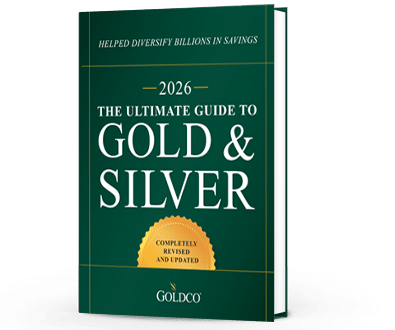6 Indicators of a Potential Recession
It seems that in the media today there are more and more mentions of the dreaded R-word: recession With growing economic uncertainty, the threat of potential recession seems to be growing as...
Economy

Talk of the Federal Reserve tapering its asset purchases have Wall Street afraid that easy money is coming to an end. But don’t believe the hype you read in the mainstream financial media. The reality is that the Fed can’t normalize monetary policy, as any attempt to do so would risk blowing up the economy. Not only does that leave the Fed between a rock and a hard place, it has investors in a bit of a bind too.
The reality is that we’re living in an era in which monetary policy will likely be permanently loose. Nothing short of a major financial market collapse could cause the Fed to ceases its monetary easing, except that in such a circumstance the Fed would likely continue to create money, as that is all it knows how to do.
The Fed is so invested in its current policy of easing that there really is no going back. Monetary policy normalization, when the Fed’s balance sheet is now ten times larger than it was pre-2008, is as likely as the federal government paying off the national debt. It won’t happen, no matter how much it really needs to.
It’s important first to define what exactly we mean by normalizing monetary policy. Normalizing monetary policy doesn’t mean tapering. Nor does it mean raising the federal funds rate a few times. Neither one of those is normalization.
Tapering from $1.5 trillion of annual quantitative easing (QE) to $1 trillion to $500 billion isn’t normalizing policy, it’s merely decreasing the rate at which new currency is being created. But it’s still expansionary and it’s still QE. Real normalization means eliminating QE completely and returning to more conventional methods of monetary policy such as normal pre-crisis open market operations.
Similarly, the possibility that the Fed might raise interest rates to 0.50% or 1% late in 2023 isn’t hawkish policy, nor is it a return to normal monetary policy. Normal monetary policy means not pushing rates down to near zero, nor does it mean keeping rates abnormally low. Historically the Fed almost never pushed rates down below 2%, so anything below that rate is still a historical anomaly.
While we all would like to see the Fed return to normal monetary policy, there are four crucial reasons that it can’t.
Raising interest rates to more normal levels would wreak havoc on debt markets that have been addicted to cheap debt since 2008. With interest rates at historical lows, both governments and corporations have taken advantage of those low rates to issue massive amounts of new debt.
Many corporations and governments have taken to turning over that debt, never paying it off but constantly refinancing at lower and lower interest rates. Rising interest rates would increase the cost of borrowing, which would be the death knell for many corporations. With an estimated 20% of large public companies now classified as zombie companies, those whose income is only enough to pay the interest on their debt but not repay principal, rising interest rates could lead to a cascade of bankruptcies.
For governments, rising interest rates would similarly raise the cost of borrowing. Since the US government has been dependent on debt financing to keep its operations going for years, and particularly for the stimulus spending of the past year, higher interest rates on debt would put a severe strain on its ability to continue deficit financing its operations.
Perhaps even more important is the effect that rising interest rates would have on government spending on interest. In Fiscal Year 2020, the US Government spent $522 billion on interest on the national debt. For FY 2021 the government is expected to spend nearly $500 billion at its current rate of spending. But that’s dependent on low interest rates.
As of May 2021, the marketable Treasury securities held by the public totaled $21.4 trillion. $4.4 trillion of that, or about 20%, was in the form of Treasury bills, securities with a maturity of less than one year. $11.8 trillion, or about 55%, was in the form of Treasury notes, securities with a maturity between one year and ten years. And over half of that, $6.4 trillion, is coming due within three years.
In total, about 50% of the United States government’s entire debt held by the public is due within the next three years. So short-term changes to interest rates could have a tremendous impact on the government’s ability to maintain that heavy weighting towards short-term Treasury security issuance upon which it has become dependent.
Normalization of monetary policy would mean that the Fed would no longer intervene in asset markets on a regular basis. Right now the Fed has pledged to purchase at least $80 billion in Treasury securities per month and $40 billion in agency mortgage-backed securities. That’s nearly $1.5 trillion in total QE, with almost $1 trillion pledged to buy Treasury securities.
That is a huge backstop for federal government spending. If you knew that someone was going to purchase $1 trillion of your debt each year, would you take them up on that offer or would you try to balance your budget? The choice is obvious, as is the reality that the federal government can’t engage in deficit spending anymore without Fed support.
With President Biden projecting federal deficits of over $1 trillion every year for the next decade, the reality is that the Fed will be forced to help support that deficit spending. And thus, normalization of monetary policy will never occur due to that unbalanced budget.
A great part of the reasoning for QE was to prevent a severe recession. It didn’t really help the 2008 crisis, of course, but it helped to keep kicking the can down the road.
The origins of every recession are in the Fed’s monetary interventions, and the Fed’s response is to create even more money, trying to print its way out of a problem. But as a result each bubble gets bigger and bigger, and when the bubble bursts the ensuing recession or crisis gets worse and worse.
The Fed is trying to put off the day of final reckoning as long as it can by continually creating more money out of thin air. Eventually that policy will fail, but no one knows when. The fear, however, is that if the Fed tries to normalize policy it will lead to a recession as markets that have become addicted to cheap money will collapse, much like a junkie who no longer gets his fix.
The reality is that the Fed has printed itself into a prison out of which it cannot extricate itself. If it attempts to normalize policy, it could risk collapsing the economy since markets have been so addicted to easy money for so long.
But if the Fed continues to print money, inflation could spiral out of control, damaging any recovery that is taking place and similarly wrecking the economy. No matter what the Fed does, an economic crisis or collapse could be the ultimate result.
The prospect of an economic collapse is one that many investors fear. And it could come sooner than many of us expect. With a central bank keeping the floodgates of easy money wide open, spurring inflation, we could be entering a new era of stagflation similar to that of the 1970s, only this time around there may not be a Paul Volcker on the other end helping to stamp out inflation.
While the Fed still claims that inflation will be transitory, many Wall Street analysts expect at least four years of high inflation. If you are nearing retirement, can you afford to allow your retirement savings to lose purchasing power due to rising inflation?
As in previous crises, many investors are looking to precious metals such as gold to safeguard their wealth. Gold’s performance during crises is well known, such as its 30% average annualized gains during the 1970s, or its near-tripling in the aftermath of the 2008 financial crisis.
With modern investment vehicles such as a gold IRA, you can invest in physical gold coins or bars with relative ease, enjoying the same tax advantages as any other IRA account. You can even roll over or transfer assets from existing retirement accounts such as a 401(k), IRA, TSP, or similar accounts into a gold IRA tax-free.
Don’t allow your hard-earned retirement assets to fall victim to inflation or economic turmoil. Talk to the precious metals experts at Goldco today to learn more about how gold can help protect your retirement savings.

